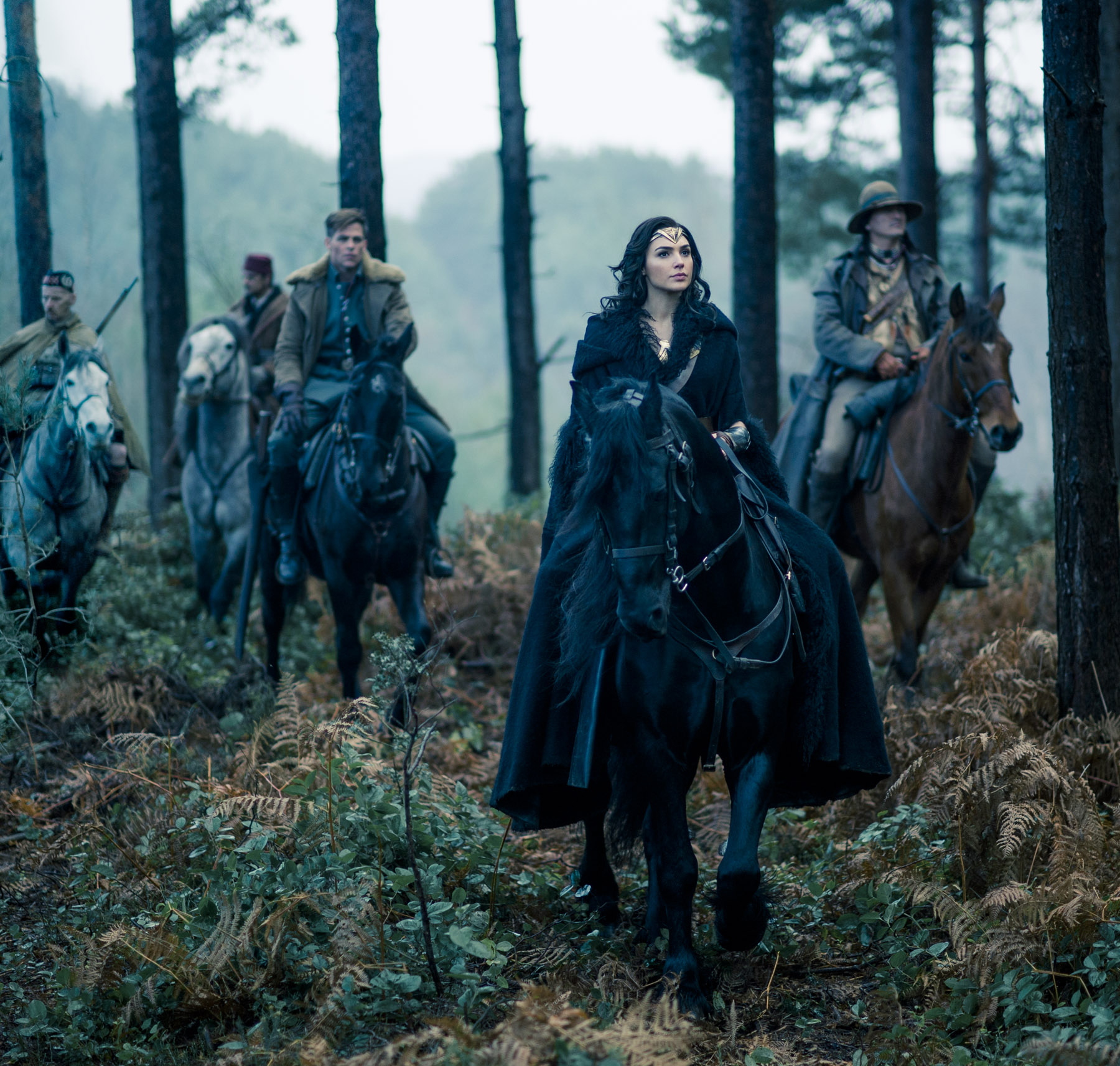
She’s been a suffragist, a soldier and a sex symbol. But it took 75 years to bring the world’s most famous female superhero to the big screen. Why we need Wonder Woman now.
It was supposed to be a photo-op.
Earlier this year, the United Nations decided to name Wonder Woman an honorary ambassador ahead of the 75-year-old comic-book character’s first-ever feature film. The title had previously been bestowed on Winnie the Pooh and the red Angry Bird without much commotion. But this time, the U.N. named the bustiered bombshell Honorary Ambassador for the Empowerment of Women and Girls. The U.N.’s press officers set up a ceremony in October at the organization’s New York City headquarters to honor the comic-book character as well as Gal Gadot, the Israeli actor who played her in 2016’s Batman v Superman and will reprise the role this summer.
Things quickly went sideways. As Gadot greeted dozens of cheering elementary-school-age girls, the adults sitting behind them raised their fists and turned their backs. Outside, some 100 U.N. staffers gathered in protest. More than 600 of them had signed a petition objecting to “a large-breasted white woman of impossible proportions” and “the epitome of a ‘pinup’ girl” becoming an official symbol of female power. Two months later, Wonder Woman’s ambassadorial privileges were unceremoniously withdrawn—setting off another round of cheers and jeers.
Wonder Woman has seen it all before. Since her inception, the world’s most recognizable female superhero has been a source of controversy, her values and significance changing with the times. She has been a suffragist, a sex symbol, a soldier—and President of the United States. Along the way, Wonder Woman changed costumes dozens of times, her hemline migrating up, down and back up again.
But the woman who now plays her hasn’t gotten used to the vitriol. “There are so many horrible things that are going on in the world, and this is what you’re protesting, seriously?” Gadot asks, reflecting on the U.N. blowback. Warner Bros. cast perhaps the only actor in the world who, like Wonder Woman, is both a model and a soldier: Gadot won the title of Miss Israel in 2004 and served in the Israel Defense Forces. But that doesn’t mean the 31-year-old hasn’t been baffled by persistent debates about Wonder Woman’s looks—and the sexual and anti-Semitic harassment Gadot has received online over the past two years. “When people argue that Wonder Woman should ‘cover up,’ I don’t quite get it,” she says. “They say, ‘If she’s smart and strong, she can’t also be sexy.’ That’s not fair. Why can’t she be all of the above?”
That question is on the minds of studio executives who are hoping that, after a decade of white men dominating the comic-book-movie boom, audiences are ready for something new. Female superheroes don’t have much of a track record at the box office, partly because of movie studios’ reluctance to bring female leads to the screen. Their logic has been that their target demographic—teenage boys—wouldn’t want to see a woman fight. A string of early-2000s bombs like Elektra and Catwoman didn’t help. While Batman has had nine live-action feature films and Superman seven, Wonder Woman has had none.
Some of Hollywood’s most powerful directors have tried. Joss Whedon (The Avengers), George Miller (Mad Max) and Paul Feig (Ghostbusters) all failed to bring the Amazonian princess to the big screen. Come June it will be a woman, Patty Jenkins—one of the first female directors to command a budget of over $100 million—who finally releases a Wonder Woman film. Much more than money is at stake: if Wonder Woman works, it could change the kinds of role models we find at the movies.
Story continues below.
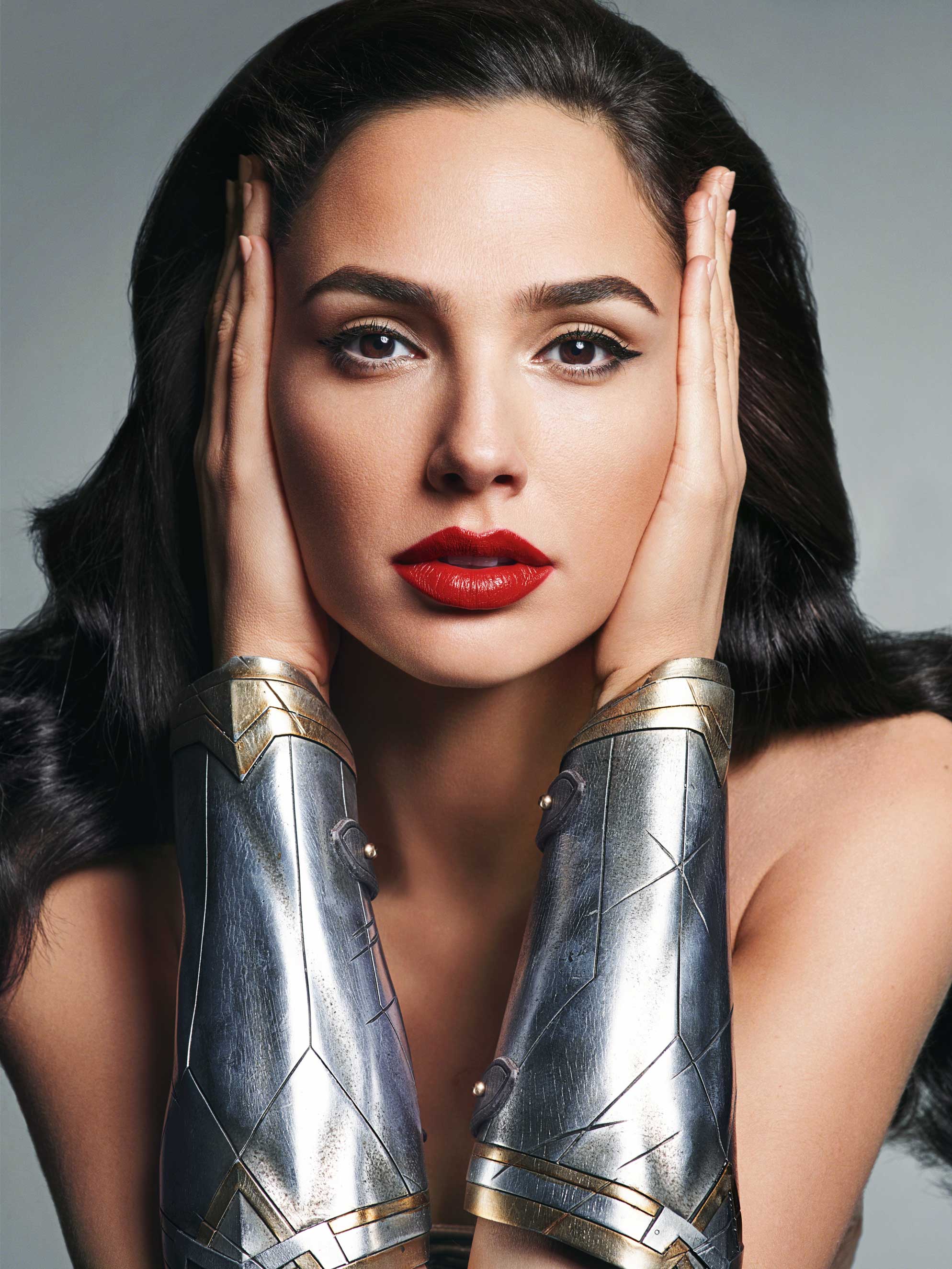
To follow Wonder Woman’s evolution is to trace the trajectory of the women’s movement in America. The man who created her in 1941, William Moulton Marston, was a feminist, a psychologist and the inventor of the lie-detector test. Marston conceived Wonder Woman as a parent-friendly comic-book alternative to bellicose male heroes. Batman carried a gun, and Superman was a shade too close to the German Übermensch, the concept that Adolf Hitler used to describe his fantasy of a “biologically superior” Aryan race. What comic books needed, Marston thought, was a hero who would represent America’s position in the war: a patriot motivated to shield the innocent.
Marston’s Wonder Woman was born Princess Diana on the fictitious all-female island of Themyscira and trained as an Amazon warrior. Her first exposure to men came when an American soldier, Steve Trevor, washed ashore after a plane crash. Diana traveled to the U.S. with him and fought in World War II. Her weapons were defensive—bracelets capable of deflecting bullets and the Lasso of Truth, which allowed her to acquire intelligence. (She didn’t get her sword until the 1980s.) She and the shield-wielding Captain America premiered within months of each other.
Marston also wanted to create an icon for little girls. “Not even girls want to be girls so long as our feminine archetype lacks force, strength, power,” he wrote in a 1943 magazine article. “Women’s strong qualities have become despised because of their weak ones. The obvious remedy is to create a feminine character with all the strength of Superman plus all the allure of a good and beautiful woman.” The result was a woman who fought alongside male soldiers and, in 1943, ran for President of the United States—against her love interest Steve and the Man’s World Party—and won.
Her looks were a matter of debate from the start. Marston was inspired by the pinups that adorned soldiers’ barracks. In almost every comic, Wonder Woman found herself, at some point, bound up in chains—an image Marston argued was essential to the larger narrative of breaking free from the patriarchy. (His editors worried it was too kinky, but let it slide.)
See the Evolution of Wonder Woman in the Comics
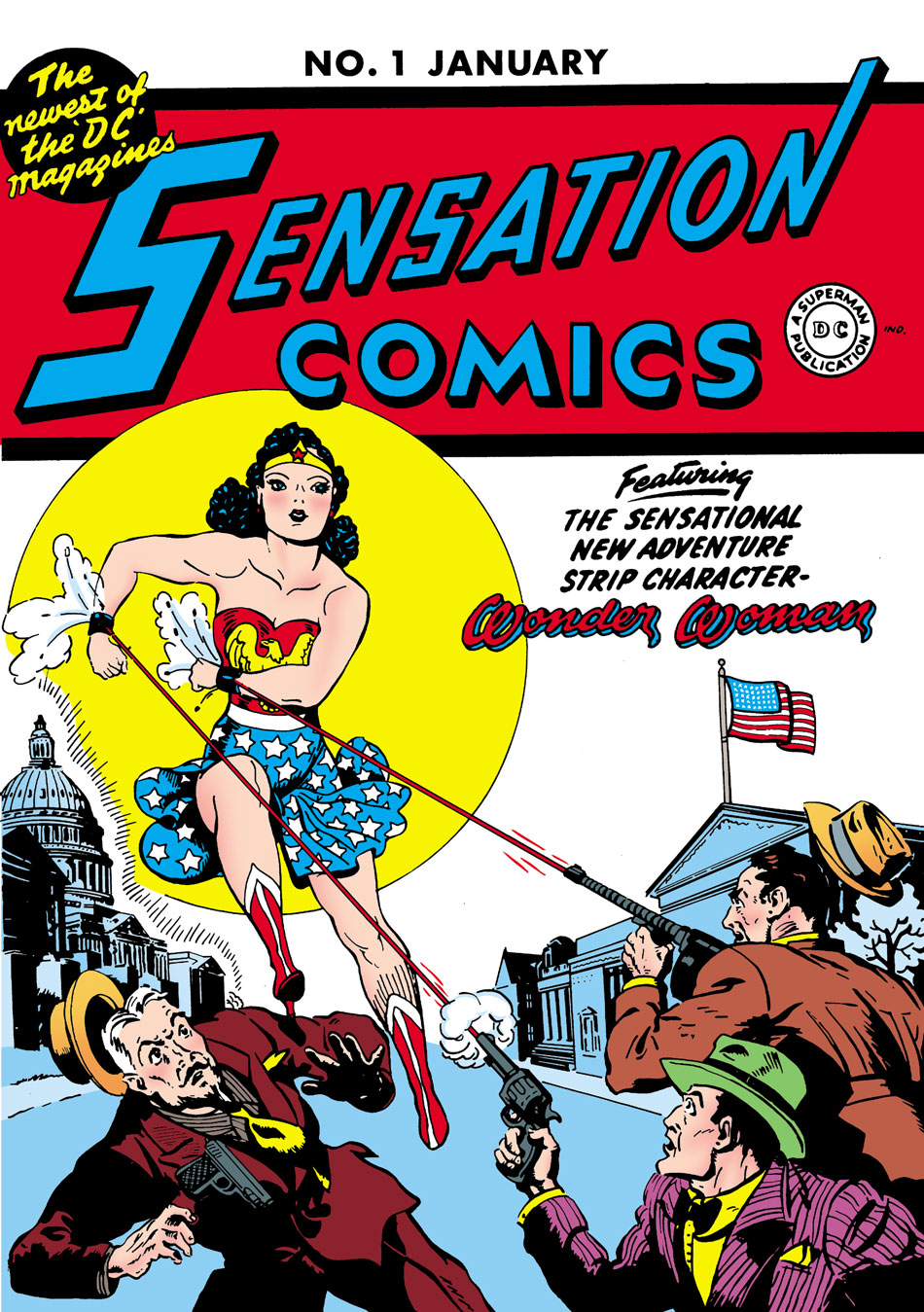

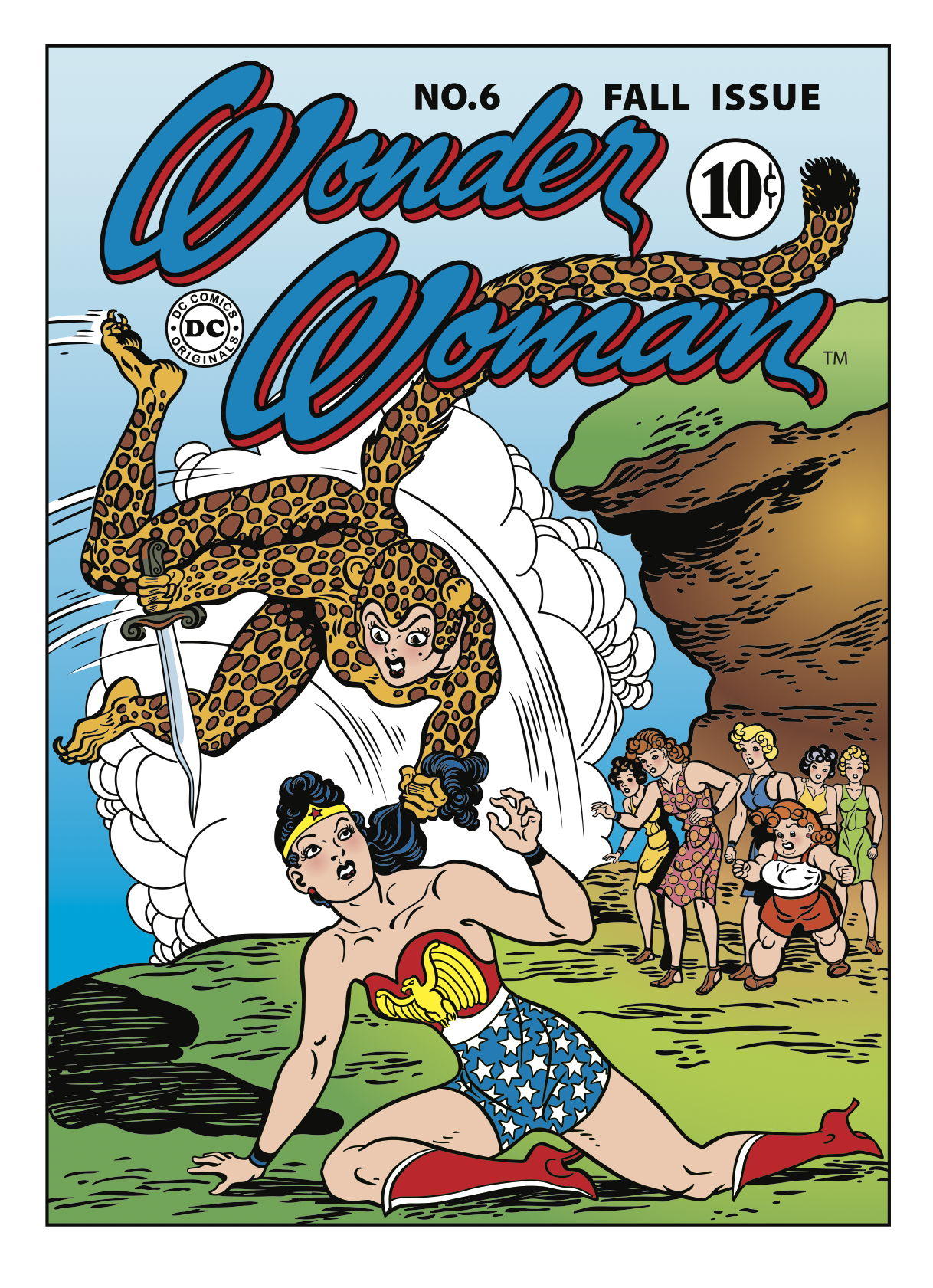

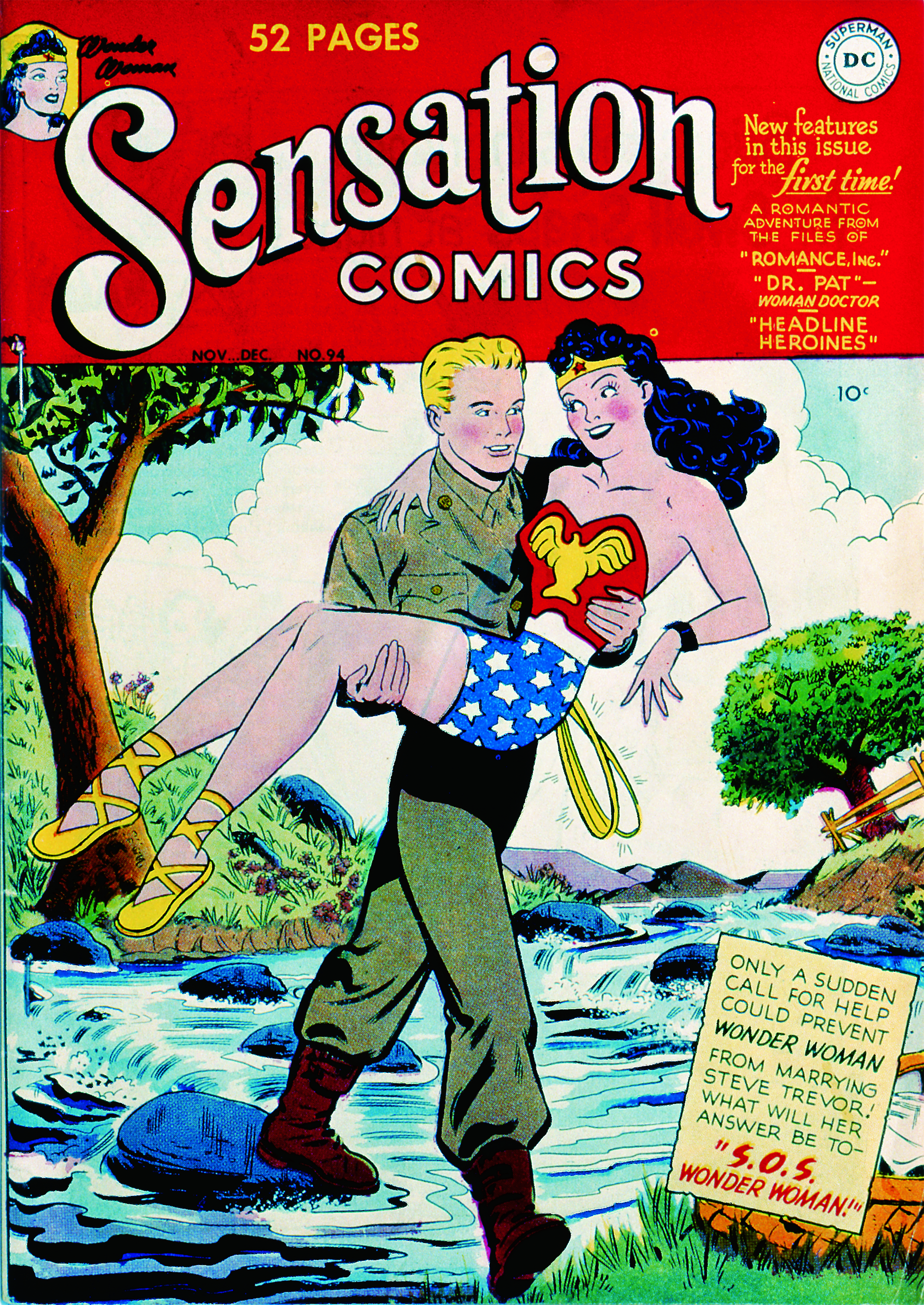

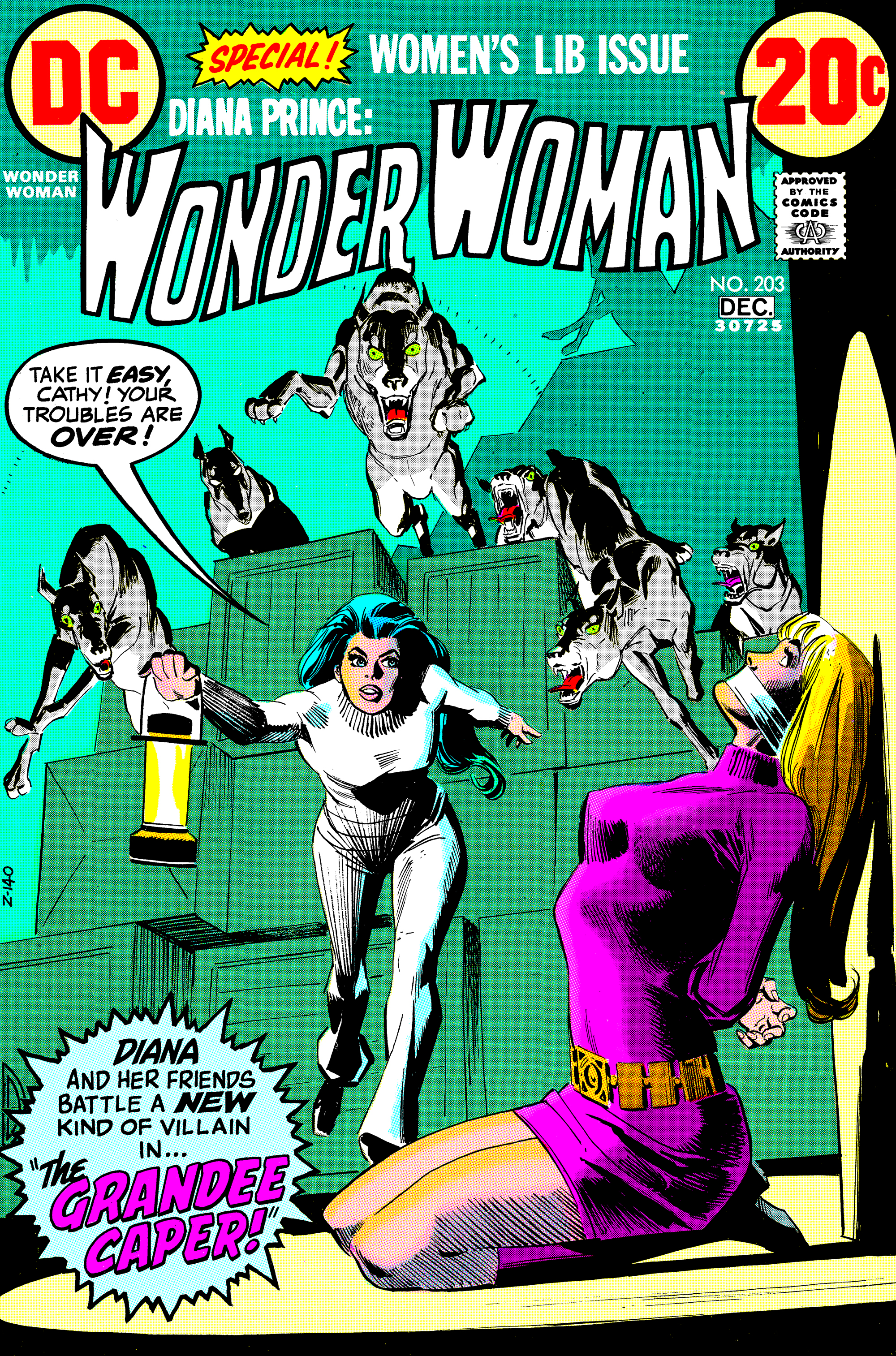
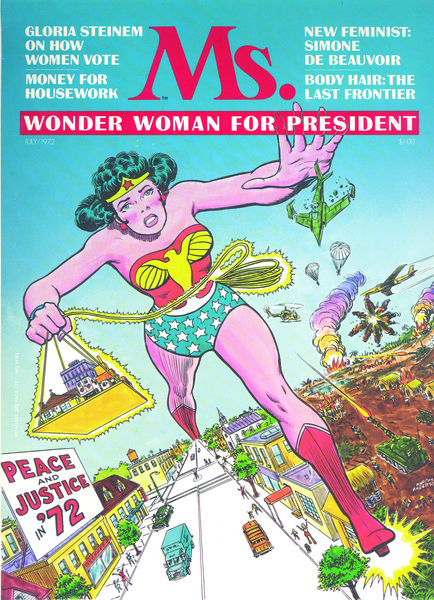
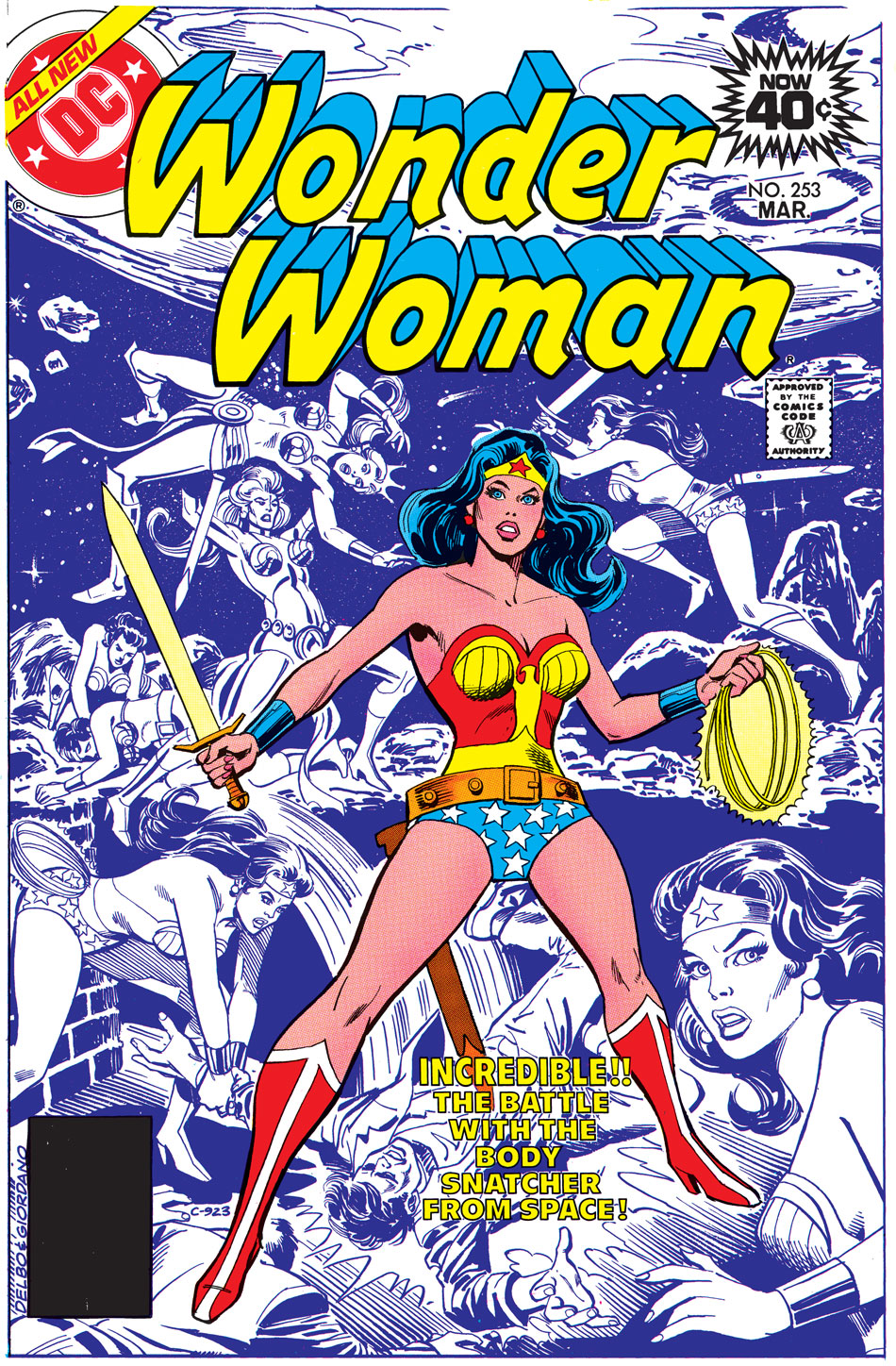
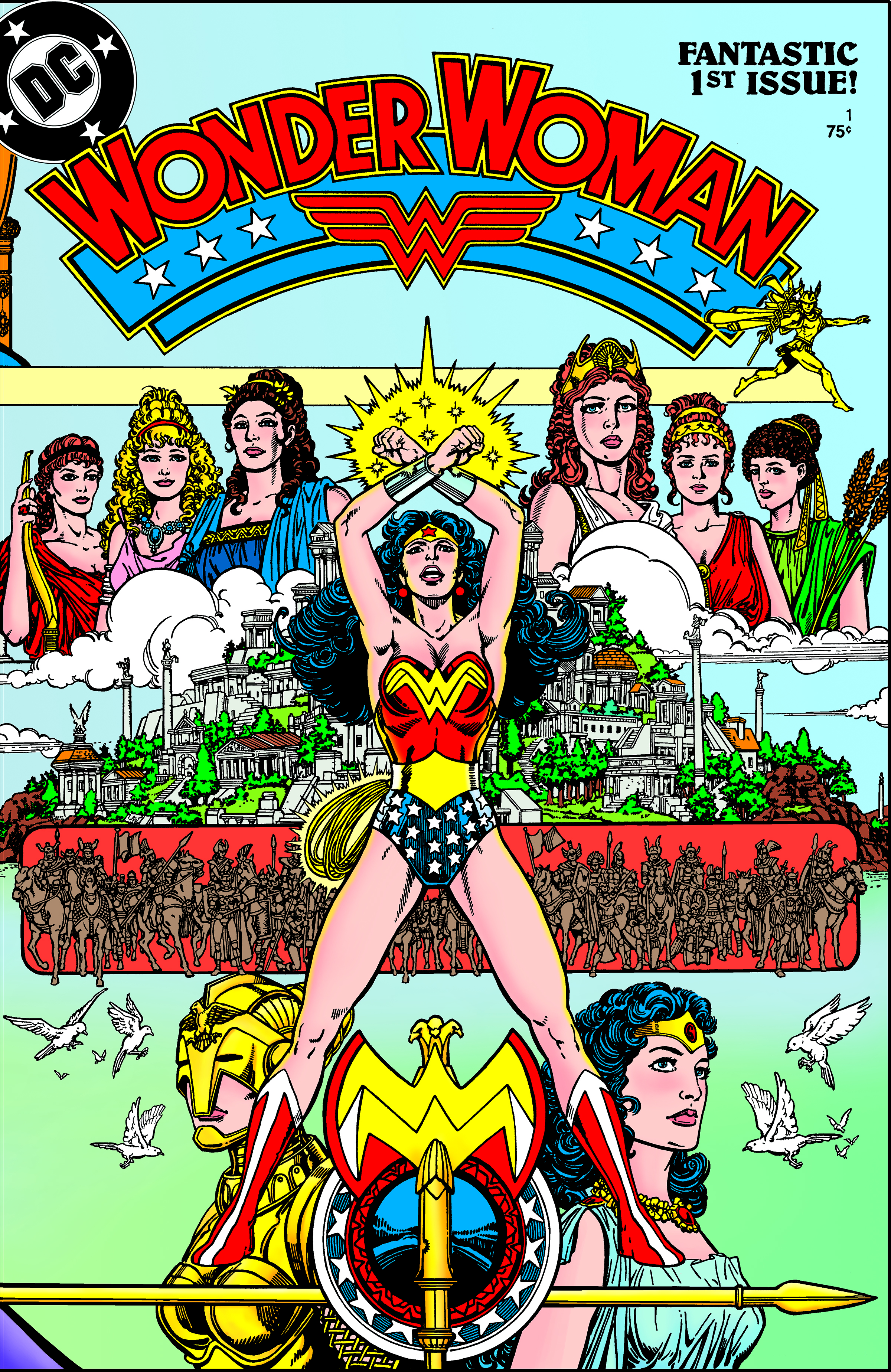
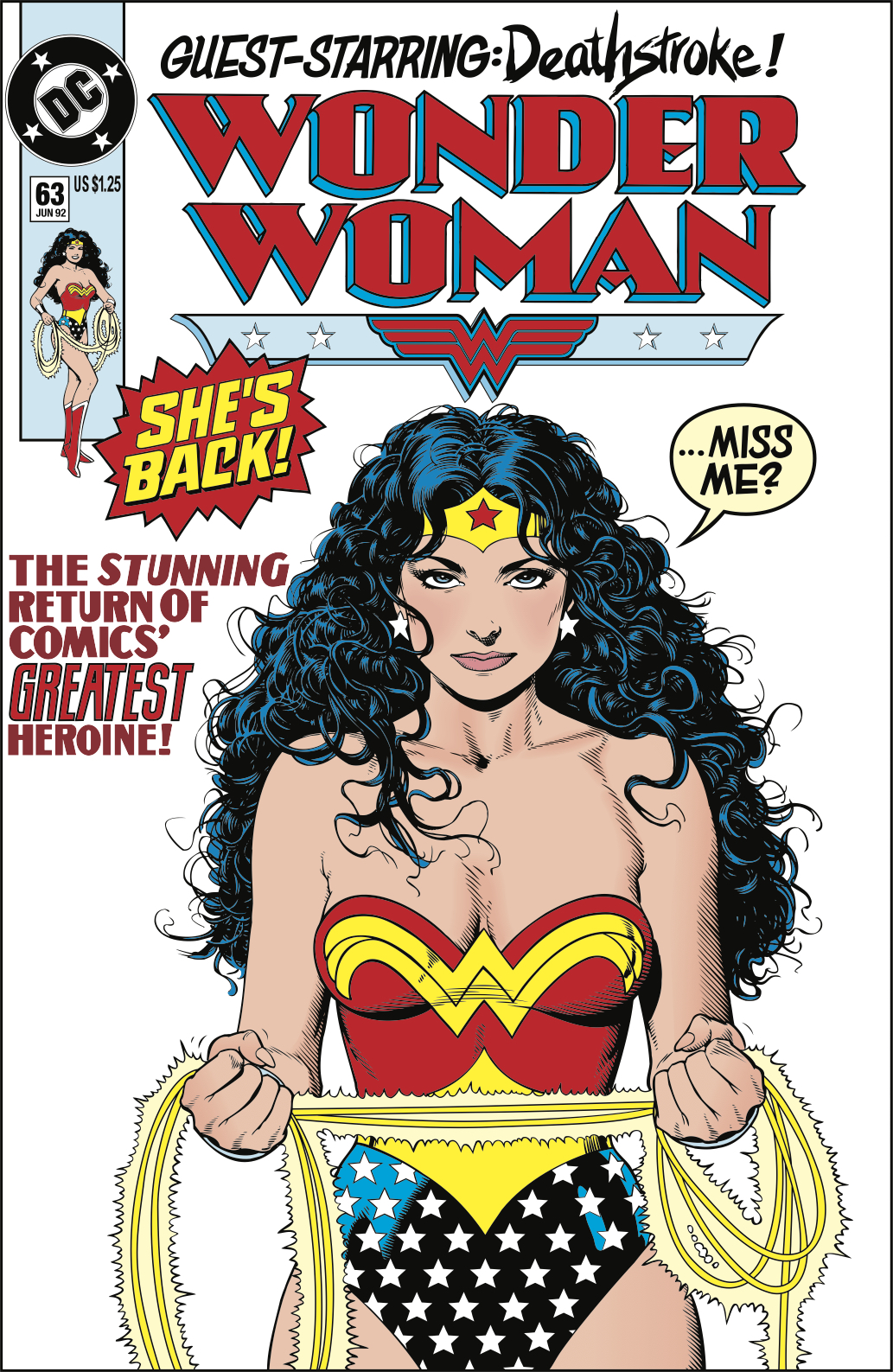
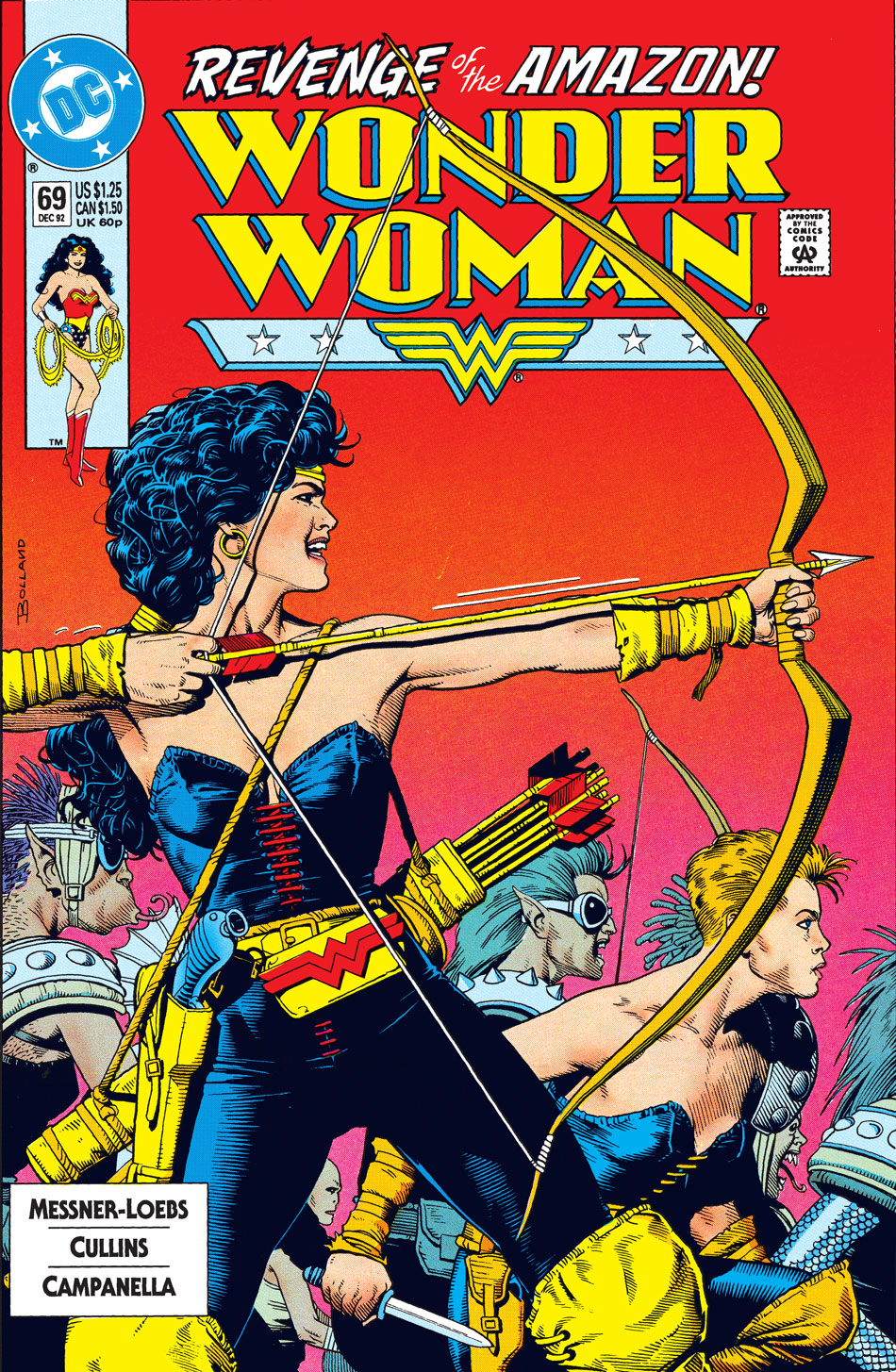
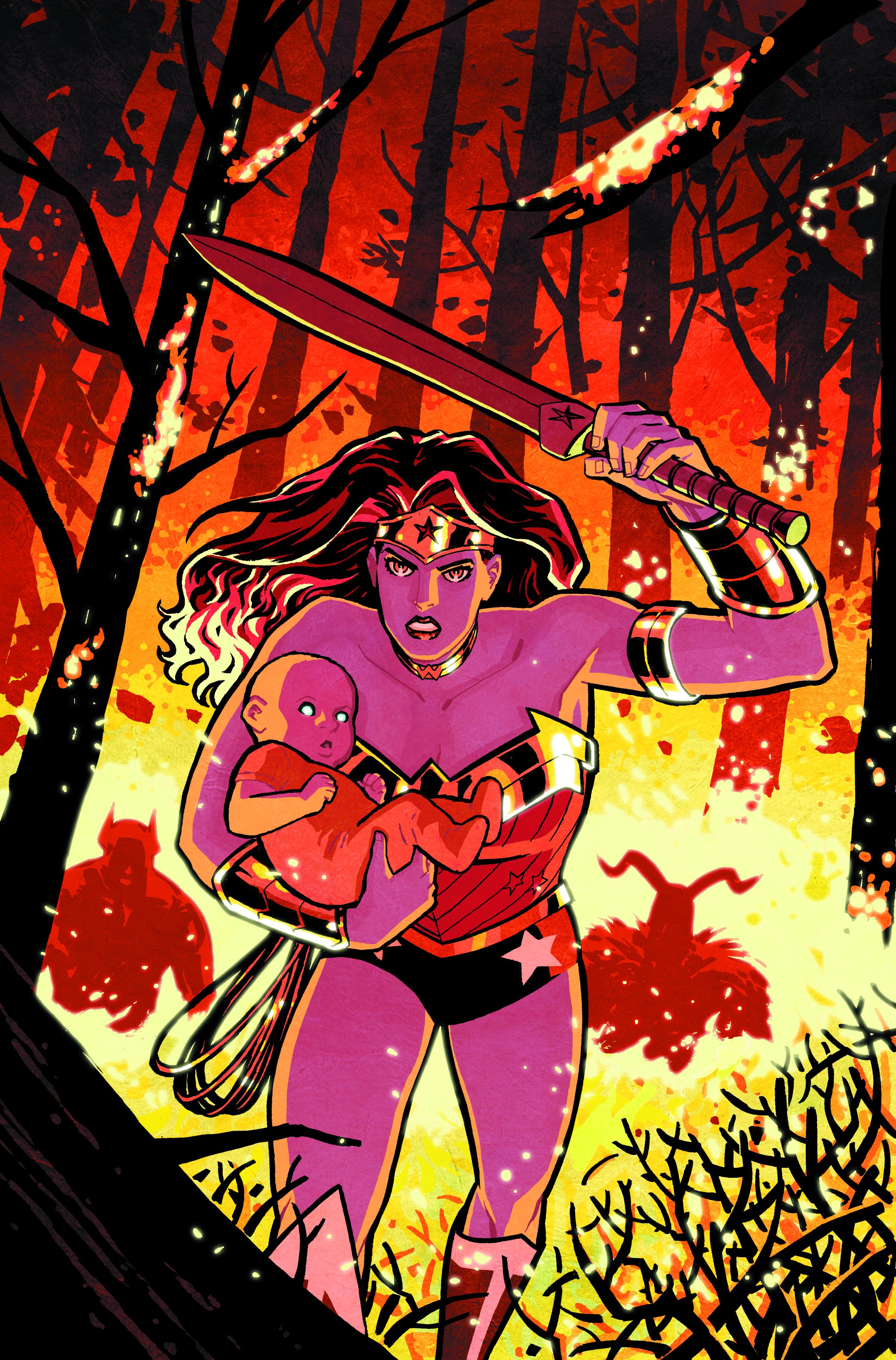
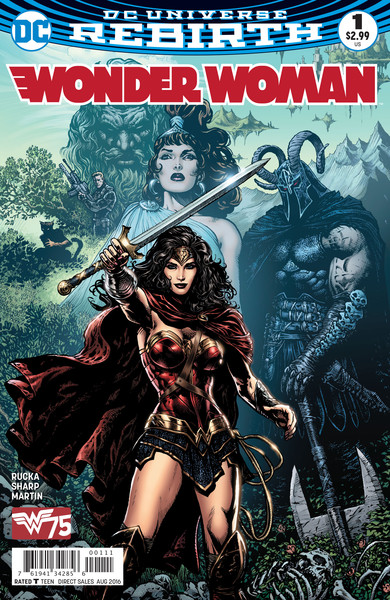
To that end, Wonder Woman illustrator Harry G. Peter mimicked the statuesque Amazonian women drawn during the 1910s by artist Annie Lucasta Rogers. “Amazonian women breaking chains and wearing tiaras, that was the visual vocabulary of feminism and suffrage,” says historian Jill Lepore, who wrote The Secret History of Wonder Woman. Marston believed that Wonder Woman’s attractiveness was part of her power, presaging the sex-positive feminism of future icons like Lady Gaga and Beyoncé.
After Marston’s death in 1947, Wonder Woman evolved—or devolved—depending on her editor. When the war ended and men returned from the front lines, many women who had been filling in on the factory lines were sent home. Accordingly, Wonder Woman was demoted from superhero to babysitter and fashion model. A cover from 1949 shows Steve carrying Wonder Woman, now wearing dainty ballet slippers instead of combat-ready boots, across a pond. Sidebars in the comics that had previously highlighted historical feminist figures were replaced by wedding-advice columns.
In 1972, Wonder Woman experienced a resurgence when Gloria Steinem put her on the first cover of the feminist magazine Ms. The headline, “Wonder Woman for President,” was partly a throwback to Marston’s original. A few years later, she got a TV series starring Lynda Carter. “They didn’t think a woman could hold her own show, so they had an awfully difficult time with the networks,” says Carter. The show ran on ABC for one season and on CBS for another two. It was enough of a ratings success that Carter credits it with paving the way for subsequent female-led action shows like Charlie’s Angels.
The messages were mixed. The first shot of Carter as Wonder Woman, for example, shows her skipping along a beach in a short purple nightgown, the kind a Bond girl might wear. Yet when she finds Steve unconscious, she lifts him up and carries him to safety.
Nevertheless, the series made an impression on a generation of girls, including on future director Jenkins, who totted a Wonder Woman notebook around with her in grade school. “We all fought at recess about who was going to be Wonder Woman, because she was the only female superhero we could even think of,” Jenkins says. “So it was play Wonder Woman or be out of the game.”
In the 1980s, the hero disappeared from television, but the comic-book version got a modern setting and a more muscular frame. In the 1990s, she was outfitted in a skintight black leather outfit in a bid for more readers. By the 2000s, her plotlines confronted issues like rape. Throughout, a handful of Wonder Woman projects kicked around Hollywood, with names like Jennifer Aniston and Sandra Bullock reportedly attached. They all failed to materialize—until now.
Story continues below.

Jenkins had a lot of time to think about how she’d make a Wonder Woman movie: she began to pitch the idea after her film Monster won Charlize Theron an Academy Award in 2004 and established Jenkins as one of Hollywood’s best-known female directors. Jenkins was hired in 2011 to direct the sequel to Thor. She would have been the first woman to helm a Marvel movie—or any major superhero film—but she and the studio parted ways over “creative differences” later that year. Jenkins declines to discuss the experience, save to express appreciation for Marvel’s initial hiring of a female director—even if a man ended up making the film.
Since Iron Man premiered in 2008, Marvel and its parent company, Disney, have produced about two superhero films a year, grossing upwards of $8.3 billion globally. In a bid to catch up, Warner Bros., which owns rival DC Entertainment, has launched an ambitious effort to make at least 10 new movies based on Batman, Superman and the rest of the Justice League heroes and villains over the next five years.
But both studios have lately realized that to continue fueling the superhero boom, they will need to come up with more diverse protagonists. Fans have been asking for characters who look more like them both on social media and during question-and-answer sessions at San Diego Comic-Con, the annual pop-culture convention that draws more than 130,000 fans. Marvel will premiere its first superhero movie with a black lead under Disney, Black Panther, in 2018. But Warner will beat its rival’s first female superhero film, Captain Marvel, by two years.
Wonder Woman will certainly be different from any previous comic-book film. It takes place during World War I, at the same time as the American and British suffrage movements. Robin Wright plays an Amazonian mentor, and Connie Nielsen is Wonder Woman’s mother. When their paradise is attacked by men with guns, the women warriors fight back with arrows. Later, Wonder Woman travels with Steve, masquerading as his secretary, to join the Allies. Her lariat shines against the gray backdrop of the war’s trenches.
To re-create the all-female paradise of Themyscira, Jenkins and her producers flew dozens of female actors and stunt doubles to a town in Italy called Happy Village. “It was like a kibbutz, all of us living in little bungalows, beautiful and green with no cars,” says Gadot. “We had all these women in armor fighting on the beach, and meanwhile all the men—husbands and boyfriends—are walking around with strollers and taking care of the kids.” Jenkins says it set the tone for the filmmaking. “It wasn’t just a gathering of beautiful women,” she adds. “It was exclusively badass, interesting women.”
The unique history of Wonder Woman, and the pressure from fans to get it right, meant the filmmakers had to tread carefully. Steve, played by Star Trek star Chris Pine, needed to be supportive but not emasculated. “After all, none of us wants to be in love with someone who isn’t grand in their own right,” says Jenkins. And they had to find pathos in a goddess and a compelling narrative for a character who is more interested in peace than conflict. Batman, with his constant moral anxiety, has always been more interesting than, say, the purely good Captain America.
Jenkins drew inspiration from the 1978 Superman film starring Christopher Reeve. Like Marston, she wanted to make Wonder Woman a character to look up to. The heroes that studios put onscreen can determine whether a child sees herself as a protagonist or a sidekick—and there has not yet been a Superman-like figure for young girls. The fact that a woman could utter the same stoic dialogue Superman has for years, Jenkins believed, would make the character stand out. “We’ve spent years treating male heroes in certain ways,” she says. “I just applied those same tropes to her, and all these incredible radical moments suddenly appear to an audience.”
Gadot thinks the bigger challenge was proving the character could exude both force and compassion, characteristics often held in opposition. “We knew it was tricky. We wanted to find the balance between portraying her as confident and strong and feminine and warm,” she says. “I didn’t want her to be a ball buster. I didn’t want her to be bossy. You can be powerful and also loving.”
Then there was the issue of the costume. The movie version looks far more war-ready than the one Carter wore in the television series. Still, critics were quick to note that Wonder Woman fights in a bustier and skirt, while her ally Batman’s body is fully covered, save his mouth and eyes. Gadot admits that she nearly froze in the getup while filming during winter in London. Greg Rucka, who currently writes one of the Wonder Woman comics, says the character’s outfit has been hotly debated during his tenure at DC. “I get frustrated when I’m given [an illustration of] Diana in three-inch heels, because she can’t fight like that. I have an easier time with her flying than fighting in three-inch heels or dental-floss bottoms,” he says. “I like the costume for the movie because Gal can actually run and jump and kick in that.”
Gal Gadot is as close to embodying an Amazonian idol in real life as you can get. She competed in a Miss Universe pageant (owned and produced by Donald Trump) and—like her Holocaust-survivor grandfather and parents before her—served in the Israeli military as part of the country’s mandatory conscription. Like Wonder Woman, she considers herself a pacifist: “I know it sounds cheesy, but I wish we didn’t have to have an army at all,” she says. If the original incarnation of Wonder Woman greeted everyone she met with love, Gadot rattles off compliments to waiters that make them blush and leans in to tell jokes to strangers.
She sees her job, partly, as clarifying Wonder Woman’s message of empowerment. “I think people take it the wrong way when I say I’m a feminist,” she says. “Feminism is not about burning bras and hating men. It’s about gender equality. Whoever is not a feminist is a chauvinist.”
Gadot has spent the last two years at Comic-Con emphasizing the importance of strong female figures in boys’ lives too—including an off-script moment in 2015 when she told a young boy who said he was bullied for wearing Wonder Woman gear that he was “more of a man” for loving and supporting women. “We need to educate boys, show boys strong women in powerful positions,” she says. “It’s all about expanding the possibilities of what women can be. I know I couldn’t do this without my husband,” Israeli real estate developer Yaron Varsano.
The backlash against Gadot mirrors much of the abuse endured by other women in the spotlight—from Susan B. Anthony to Hillary Clinton. “Did you see the feedback I got from the fans after they cast me for this role?” Gadot asks. “It was all about my breasts and bottom literally being too small.” She has typically responded with wit, at one point shooting back that true Amazons cut off one of their breasts in order to better shoot arrows.
Marston biographer Lepore draws a comparison to the comments about Gadot’s body to resistance against strong women throughout history. “I do not envy Gal Gadot in her position. I don’t think it was some accident, for instance, that it was Jennifer Lawrence’s nude photographs that were hacked after she starred in The Hunger Games,” she says. “That’s the age-old move to demean a powerful woman and put her back in her proper position: reduce her to her appearance.”
That’s the paradox of Wonder Woman: It’s not only run-of-the-mill Internet trolls and zealous comic-book fans who take issue with her (or the actor who plays her). Some of Wonder Woman’s most ardent critics are the very people who desperately want to see more popular feminist icons but can’t ignore the ways in which the character falls short as an ambassador for women. To be sure, if you were to ask a contemporary feminist to write a new female superhero, she’d probably be nothing like Wonder Woman. And yet, this summer it’ll be up to a flawed figure to try to break whatever the superhero equivalent of a glass ceiling is.
When Warner Bros. premiered the first Wonder Woman trailer last July at Comic-Con, much of what flashed onscreen followed familiar beats: A bad guy arises with a terrible new weapon. The fate of humanity is threatened. A new hero suits up for battle. But then, something unexpected: Steve turns to Wonder Woman and says, “I can’t let you do this.” She pauses and then calmly replies, “What I do is not up to you.” The rest of the trailer was completely drowned out by the sound of thousands of fans whooping for joy.
This appears in the December 26, 2016 issue of TIME.
More Must-Reads from TIME
- Donald Trump Is TIME's 2024 Person of the Year
- Why We Chose Trump as Person of the Year
- Is Intermittent Fasting Good or Bad for You?
- The 100 Must-Read Books of 2024
- The 20 Best Christmas TV Episodes
- Column: If Optimism Feels Ridiculous Now, Try Hope
- The Future of Climate Action Is Trade Policy
- Merle Bombardieri Is Helping People Make the Baby Decision
Write to Eliana Dockterman at eliana.dockterman@time.com